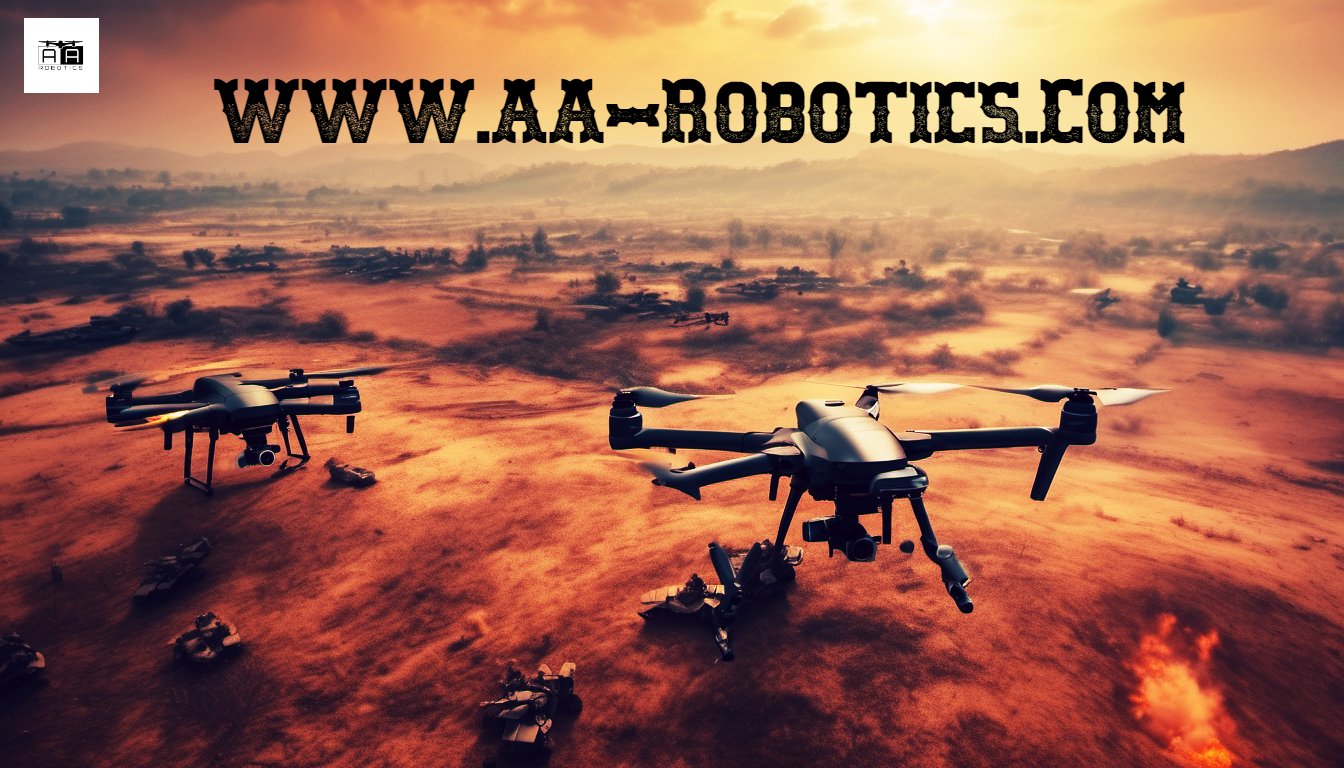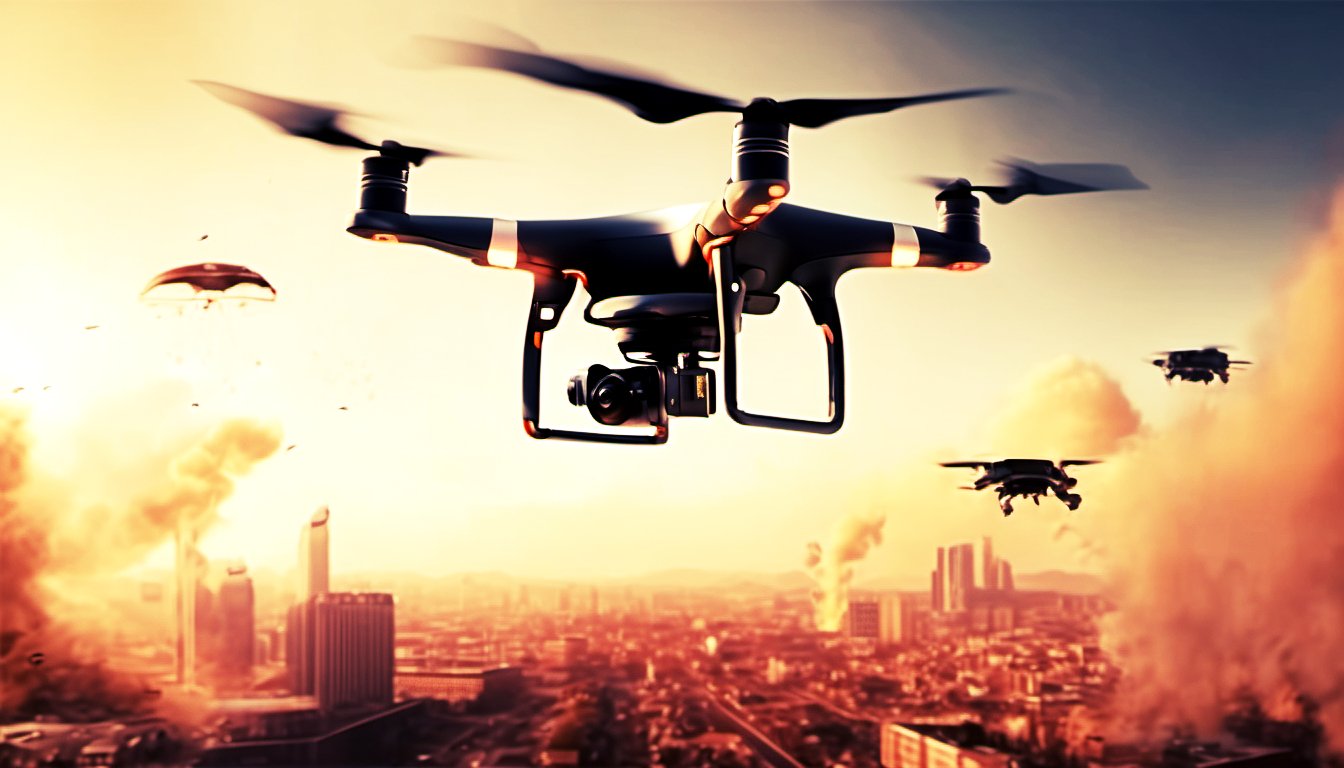
Exploring the Evolution of Unmanned Aircraft Systems Technology: From World War Era to Modern Innovations
Unmanned Aircraft Systems (UAS) Technology
Unmanned Aircraft Systems (UAS) have come a long way since their inception, tracing back to the early 20th century during World War I. Initially conceived for military reconnaissance purposes, these unmanned aircraft have evolved significantly, transcending their wartime origins to become pivotal in various civilian applications today. From the rudimentary beginnings to the cutting-edge technologies of the present, let’s embark on a journey through time to explore the remarkable evolution of UAS technology.
AA Robotics: Shaping the Future of UAS
At AA Robotics, we are committed to developing innovative and responsible UAS solutions for various industries. We believe that drones have the potential to make a positive impact on the world, and we are dedicated to helping them reach their full potential.
Join the conversation! Share your thoughts and questions about UAS technology in the comments below. Let’s explore the future of flight together.

The Dawn of Unmanned Aircraft Systems
The concept of unmanned aircraft dates back to the early 20th century, with the first documented use of unmanned aircraft vehicles (UAVs) occurring during World War I. Initially utilized for reconnaissance missions, these early UAVs were primitive compared to their modern counterparts. However, they laid the groundwork for future innovations in unmanned flight technology.
From Military Applications to Civilian Integration
Following World War I, the development of unmanned aircraft continued, primarily driven by military interests. Throughout World War II and subsequent conflicts, UAVs played increasingly significant roles in reconnaissance, target acquisition, and even combat operations. However, it wasn’t until the late 20th century that the potential for civilian applications of UAS technology began to emerge.
Building on the Legacy of World War
The legacy of World War I serves as a reminder of the transformative power of technology in times of conflict. From the rudimentary unmanned aircraft of yesteryears to the sophisticated drones of today, the journey has been nothing short of remarkable. AA Robotics pays homage to this legacy by continuously striving to push the envelope of what is possible in the realm of UAS.
Harnessing the Power of Drone Technology
Drone technology has come a long way since its inception. What was once limited to military applications has now transcended into various sectors, including agriculture, photography, cinematography, and even package delivery. AA Robotics has been at the forefront of this technological revolution, pushing the boundaries of what drones can achieve. Their state-of-the-art UAS solutions are not only redefining industries but also opening up new possibilities for innovation and exploration.

Unveiling the Acronyms: UAS vs. UAV vs. Manned Aircraft
Before we dive into the exciting world of UAS, let’s clear up some common terminology. Unmanned aerial vehicles (UAVs), also known as drones, are aircraft that operate without a human pilot onboard. These can be remotely piloted or autonomous in their flight. Unmanned aircraft systems (UAS) encompass the entire system, including the UAV itself, the ground control station, and the communication link between them. Finally, manned aircraft are traditional aircraft with a human pilot at the controls.
Beyond the Battlefield: The Rise of Civilian UAS
While military applications remain a significant part of the UAS landscape, the real boom is happening in the civilian sector. The affordability, versatility, and ease of use of modern drones have opened up a world of possibilities. Here are just a few examples:
- Precision agriculture: Drones monitor crops, identify pests and diseases, and even optimize irrigation, leading to increased yields and reduced environmental impact.
- Search and rescue: Rescue teams leverage drones to locate missing persons in remote areas or dangerous conditions, saving valuable time and lives.
- Infrastructure inspection: Drones inspect bridges, power lines, and other vital infrastructure, identifying potential problems before they become major issues.
- Delivery and logistics: Companies are exploring drone delivery for packages and medical supplies, potentially revolutionizing how goods move around the world.
- Filmmaking and photography: Drones capture stunning aerial shots and provide unique perspectives for filmmakers and photographers, enhancing storytelling capabilities.
The Evolution from Manned to Unmanned Aircraft
The concept of unmanned flight traces its roots back to the early 20th century, amidst the chaos of World War I. As nations sought ways to gain tactical advantages, the idea of deploying unmanned aircraft gained traction. These early attempts laid the foundation for what would eventually become the modern-day UAS. Fast forward to the present, and AA Robotics stands as a testament to the relentless pursuit of innovation in this field.
Modern Advancements in Drone Technology
The turn of the 21st century marked a pivotal moment for drone technology, witnessing exponential advancements in both hardware and software capabilities. Miniaturization of components, improvements in battery technology, and the advent of sophisticated flight control systems propelled UAS into the mainstream. Today, drones are utilized across diverse sectors including agriculture, infrastructure inspection, filmmaking, and disaster response, among others.

The Future of Unmanned aircraft systems Technology
As we look ahead, the future of unmanned aircraft systems appears promising, with ongoing research and development paving the way for even greater innovation. Advancements in artificial intelligence, autonomy, and sensor technology are poised to revolutionize the capabilities of UAS, opening up new possibilities in fields such as autonomous transportation, environmental monitoring, and urban planning. As technology continues to evolve, we can expect to see even more advanced drones capable of longer flight times, greater payload capacities, and enhanced autonomy. These advancements will likely lead to further integration of UAS into our daily lives, potentially impacting areas such as transportation, healthcare, and environmental monitoring.
In conclusion, the journey of unmanned aircraft systems from their origins in World War era to the present day is a testament to human ingenuity and technological progress. As we continue to push the boundaries of what is possible, the sky is no longer the limit for UAS technology. Unmanned aircraft systems have come a long way since their humble beginnings. From their wartime origins to their current diverse applications, UAS continue to revolutionize industries and shape the future. As technology advances, the possibilities for these remarkable machines seem limitless. AA Robotics is at the forefront of this exciting field, committed to developing innovative UAS solutions that benefit society and push the boundaries of what’s possible.
By embracing the rich history and promising future of unmanned aircraft systems, AA Robotics remains at the forefront of innovation, driving forward the evolution of UAS technology to new heights.



6 Comments